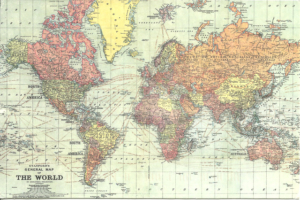Top Five Countries Fighting Global Poverty with Foreign Aid
 People helping people. Country helping country. Giving back to the world is not a strange concept and is a welcomed idea in most societies. A popular form of global help is foreign aid. The umbrella term commonly refers to monetary assistance provided by outlying or foreign governments. The funds are generally distributed through humanitarian organizations, non-profit groups or directly from a foreign government. As such, the aid is given to citizens in an abundance of forms, such as money, food or shelter. While some can afford to provide more than others on a purely numeric comparison, the amounts are measured or valued differently depending on the country’s economic standing. This list consists of five countries fighting global poverty who outshine the rest.
People helping people. Country helping country. Giving back to the world is not a strange concept and is a welcomed idea in most societies. A popular form of global help is foreign aid. The umbrella term commonly refers to monetary assistance provided by outlying or foreign governments. The funds are generally distributed through humanitarian organizations, non-profit groups or directly from a foreign government. As such, the aid is given to citizens in an abundance of forms, such as money, food or shelter. While some can afford to provide more than others on a purely numeric comparison, the amounts are measured or valued differently depending on the country’s economic standing. This list consists of five countries fighting global poverty who outshine the rest.
Top Five Countries Fighting Global Poverty
- Norway begins the list as it provides the largest amount of foreign aid in comparison to its GDP. The government put 1.11 percent of its GDP towards global humanitarian aid, spending NOK 455 million as of 2018. The country utilizes organizations such as the U.N.’s CERF (Central Emergency Response Fund), the Red Crescent Movement and the Red Cross. Recently, Norway channeled much of their funds into CERF in order to assist Venezuela in its growing refugee crisis. Norway’s contributions towards these programs effectively fight against global poverty and prove the nation should be in the top five, as its generosity in comparison to its national budget is the highest in the world.
- Luxembourg also contributes a significant portion of their GDP towards humanitarian and foreign affairs. Approximately 1 percent of their national budget, or about USD 413 million, is used for aid. Some of Luxembourg’s projects include poverty reduction through community development in Laos, education improvement in Burkina Faso and health care in Nicaragua. These countries receive specific help from various agencies and organizations like LuxDev and the Directorate for Development Cooperation and Humanitarian Affairs. These groups and projects, though just a few select examples, show how much effort Luxemborg puts in fighting poverty.
- Sweden comes forward as another example of a smaller country with a smaller budget who still makes a grand impact in the world. As about 1.04 percent of its GDP, or about USD 5.8 billion, is used for humanitarian and foreign aid, Sweden holds a top ranking. While the money touches on a broad range of topics, from civil rights to education, specific Swedish projects focus on poverty issues. For instance, Sweden recently provided aid to Somalia for drought relief through the United Nations Children’s Fund (UNICEF) and the Somalia Humanitarian Fund. Sweden makes a mark on the world by not only tackling larger, conceptual issues, but by also responding quickly to disasters and world events. Such assistance highlights the country’s proficiency in the fight against global poverty.
- The United States is a leader in fighting global poverty as it contributes the most money towards humanitarian and foreign aid. Within the past few years alone, the U.S. contributed USD 30 billion towards various forms of international aid. The nation utilizes several different federal agencies, non-profit groups and other organizations to distribute aid. The U.S. commonly works with popular organizations such as UNICEF or the Red Cross. A prime example of the U.S. effect on the world is with the sheer number of countries it provides for, as it touches nearly 40 different nations, including Pakistan and Mexico.
- Germany also provides a significant amount of aid with nearly USD 20 billion contributed towards humanitarian projects in recent years. This accounts for nearly 0.70 percent of the national budget. Popular organizations and agencies include the World Food Program, which Germany utilized to provide relief to Africa. In addition to such organizations, Germany is known to donate large amounts of money to other countries, a notable example being Syria in recent years due to their ongoing crisis. Germany’s monetary generosity also makes it the second-largest donor in the world to foreign aid, falling in just behind the U.S.
Whether it’s a natural disaster or political turmoil, when a country is in need, surrounding neighbors will often step up to help.
– Eleanora Kamerow
Photo: Flickr
